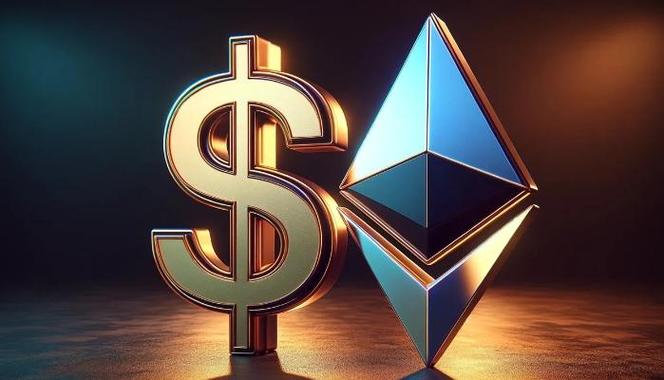
Understanding DAI and ETH: A Comprehensive Guide
When it comes to the world of cryptocurrencies, DAI and ETH are two of the most prominent and widely used digital assets. Whether you’re a seasoned investor or just dipping your toes into the crypto pool, understanding how these two assets interact and what they offer is crucial. Let’s delve into the details of DAI and ETH, exploring their unique features, uses, and how they can be traded or exchanged.
What is DAI?
DAI is a decentralized stablecoin that aims to maintain a stable value by being pegged to the US dollar. Unlike traditional fiat currencies, DAI is not controlled by any central authority and operates on the Ethereum blockchain. This makes it a popular choice for those looking to avoid the volatility associated with other cryptocurrencies.
DAI is issued by the MakerDAO platform, which uses a decentralized autonomous organization (DAO) to manage its supply. The platform allows users to create DAI by locking up Ethereum (ETH) as collateral. This process is known as “minting” and ensures that the value of DAI remains stable, as it is backed by real assets.
Understanding ETH
ETH, on the other hand, is the native cryptocurrency of the Ethereum network. It serves as the primary currency for transactions and fees on the Ethereum blockchain. ETH is also used to pay for gas, which is the cost of executing smart contracts and other transactions on the network.
ETH has gained significant popularity due to its versatility and the growing ecosystem of decentralized applications (dApps) built on the Ethereum platform. It has become a go-to investment for many crypto enthusiasts, as it offers both a store of value and a means of participating in the Ethereum ecosystem.
Trading and Exchanging DAI and ETH
Trading and exchanging DAI and ETH can be done through various platforms, including centralized exchanges (CEXs) and decentralized exchanges (DEXs). Here’s a breakdown of the process:

| Platform | How to Trade | Pros | Cons |
|---|---|---|---|
| Centralized Exchanges (CEXs) | Sign up for an account, deposit funds, find the DAI/ETH trading pair, and place an order. | Easy to use, high liquidity, and a wide range of trading options. | Centralized control, potential security risks, and higher fees. |
| Decentralized Exchanges (DEXs) | Connect your wallet, deposit funds, find the DAI/ETH trading pair, and place an order. | Decentralized control, enhanced security, and lower fees. | Complex to use, lower liquidity, and limited trading options. |
Using DAI and ETH Together
DAI and ETH can be used together in various ways, depending on your investment goals and needs. Here are a few examples:
-
Storing Value: Both DAI and ETH can be used as a store of value, with DAI offering stability and ETH providing potential growth opportunities.
-
Transacting: DAI can be used for transactions that require stability, while ETH can be used for transactions that require gas fees.
-
Investing: You can invest in both DAI and ETH, diversifying your portfolio and potentially benefiting from the strengths of both assets.
Conclusion
Understanding DAI and ETH is essential for anyone interested in the crypto space. Both assets offer unique benefits and can be used in various ways to achieve your investment goals. Whether you’re looking to store value, transact, or invest, DAI and ETH are two powerful tools that can help you navigate the crypto landscape.





